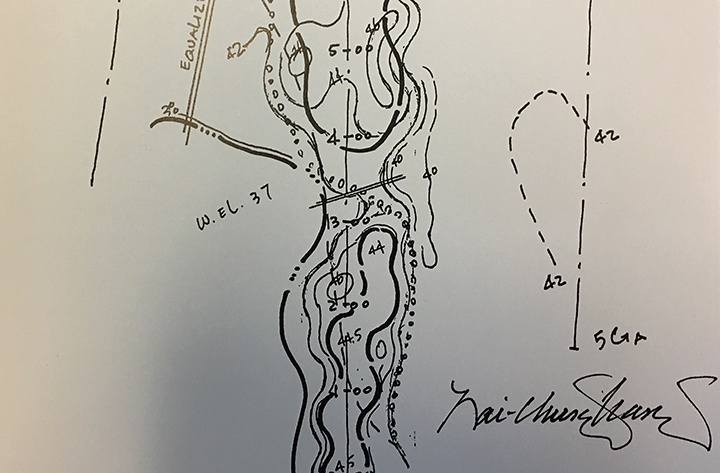 Nai Chung Lee Chang, based in Atlanta, Georgia, has created the Wood Stork Course at Wild Wing Plantation in Myrtle Beach; Port Royal in Hilton Head, South Carolina; Lions Paw Golf Links in Ocean Isle Beach, North Carolina; Southland Country Club in Atlanta; and Harborside Golf Club in Longboat Key, Florida.
Nai Chung Lee Chang, based in Atlanta, Georgia, has created the Wood Stork Course at Wild Wing Plantation in Myrtle Beach; Port Royal in Hilton Head, South Carolina; Lions Paw Golf Links in Ocean Isle Beach, North Carolina; Southland Country Club in Atlanta; and Harborside Golf Club in Longboat Key, Florida.
Would you rather dine in a gourmet restaurant at a comfortable table with fine china and silverware, soft music in the background, roses on your table, and superior service…or get your dinner in a paper bag tossed at you out of a window?
I believe walking, instead of riding in a motorized cart, enhances the experience a person has playing the game of golf.
Walking is not only part of the tradition of the game but also a physical exercise that can really help the players. If you don’t allocate enough time to play a round of golf through walking, you will not get the true enjoyment and benefits from the game.
The appreciation and vantage point one gets by walking during a round is a bit like the experience of fine dining, where you’re able to spend time enjoying the food, environment, and the entire dining occasion.
By not walking a course, one definitely misses an important component of the whole golf experience. Riding in a cart is comparable to the dining experience one has with drive-through fast food, or eating at a sports bar. Since no two golf holes or golf courses alike, the best and truest way to experience the game and the course is by walking when you play.
I started my golf architect career while attending Georgia Tech, where I was pursuing my master’s degree in city planning and architecture. While in school, I worked for Willard Byrd, an accomplished golf course architect. As a result of that apprenticeship, I got to drive over from Atlanta to Augusta to see the Masters Tournament. Walking the holes at that famed club was an important moment for me.
I began reading all of the golf books I could find. Alister Mackenzie created Augusta National, so I read his book Golf Architecture. The great English golf writer Bernard Darwin’s book Golf Courses of the British Isles, whetted my appetite for traditional golf, so as soon as I could I began taking trips overseas to play and study the Scottish golf courses.
Because of my academic training in conventional and practical city planning, and my experience playing very old courses in Scotland, I always strive to balance and maintain the equilibrium of the man-made and the natural environment when I lay out and design a golf course. I take into account the strategy of the game, the beauty of the environment, and the essence of the course maintenance to “design with nature.”
The golf course should be part of the natural ecosystem, but also enjoyed by mankind.
And should be walked.

